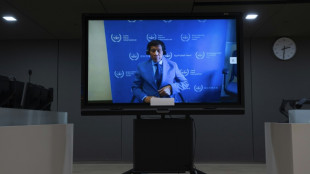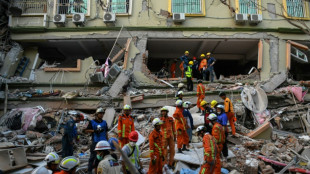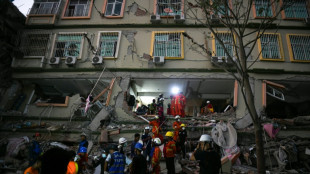

South Korea wildfires 'largest on record': disaster chief
Wildfires in South Korea are now "the largest on record" having burned more forest than any previous blaze, the country's disaster chief said Thursday, as the death toll rose to 26.
More than a dozen fires broke out over the weekend, scorching wide swathes of the southeast, forcing around 27,000 people to urgently evacuate, with the fire cutting off roads and downing communications lines as residents fled in panic.
"The wildfire is spreading rapidly," said Lee Han-kyung, disaster and safety division chief.
"26 people have died, eight are seriously injured and 22 have been lightly injured," he said.
"The forest damage has reached 35,810 hectares, already exceeding the area affected by the 2000 east coast wildfire, previously the largest on record, by more than 10,000 hectares."
The extent of damage makes it South Korea's largest ever wildfire, after the inferno in April 2000 that scorched 23,913 hectares across the east coast.
Authorities said changing wind patterns and dry weather had revealed the limitations of conventional firefighting methods.
Most of those killed were local residents, but at least three firefighters were killed, and a pilot in a firefighting helicopter died when his aircraft crashed in a mountain area, officials said.
Last year was South Korea's hottest year on record, with the Korea Meteorological Administration saying that the average annual temperature was 14.5 degrees Celsius -- two degrees higher than the preceding 30-year average of 12.5 degrees.
The fire-hit region had been experiencing unusually dry weather with below-average precipitation, authorities said, with the South experiencing more than double the number of fires this year than last.
Some types of extreme weather have a well-established link with climate change, such as heatwaves or heavy rainfall.
Other phenomena, such as forest fires, droughts, snowstorms and tropical storms can result from a combination of complex factors.
- 'Climate crisis' -
"This wildfire has once again exposed the harsh reality of a climate crisis unlike anything we've experienced before," disaster chief Lee said.
"The affected areas have seen only half the average rainfall, coupled with unusually strong winds, which have drastically accelerated the spread of the fire and intensified the damage," he said.
Expert Yeh Sang-Wook, professor of climatology at Seoul's Hanyang University, told AFP that the lack of rainfall had dried out the land "creating favourable conditions for wildfires."
"This can be seen as one of the fundamental causes," he said.
"We can't say that it's only due to climate change, but climate change is directly (and) indirectly affecting the changes we are experiencing now. This is a sheer fact."
The impact of South Korea's demographic crisis was also on full display -- the country is a so-called super aged society, with one of the world's lowest birthrates.
"It is worrying that many of the victims are senior citizens, including patients at nursing hospitals," Acting President Han Duck-soo said, as he ordered the country's interior minister to relocate to the affected area to oversee relief efforts.
Rain is forecast for late Thursday, potentially giving authorities a much-needed window to extinguish the blazes.
Multiple historic sites, including two listed with UNESCO, were threatened by the fires, with South Korean heritage officials working with firefighters.
At UNESCO-listed Byungsan Suwon, a former Confucian academy, the sky was full of haze, AFP reporters saw, with fire trucks spraying water and fire-retardants onto the historic site in a desperate bit to save it.
"We are spraying three tonnes of water every day as a fire prevention measure across the premises, including the buildings," Lee Seung-myung, head of fire safety team at Andong fire department told AFP.
"If a fire breaks out here, it is likely to be triggered by flames spreading from the pine trees, so we are now cutting them down near the site to prevent such a scenario," Lee added.
馮-X.Féng--THT-士蔑報




